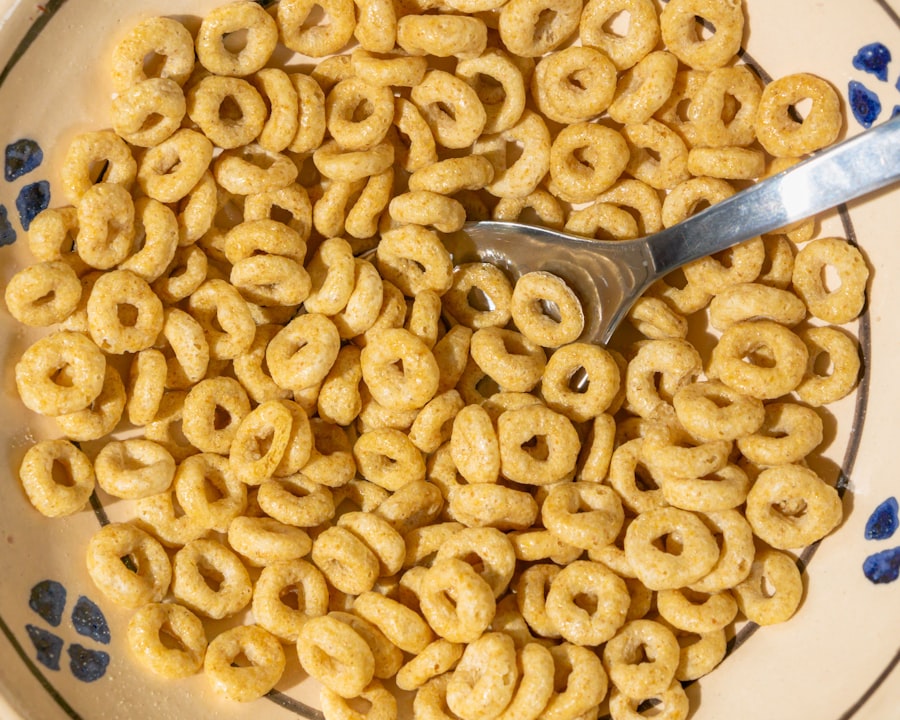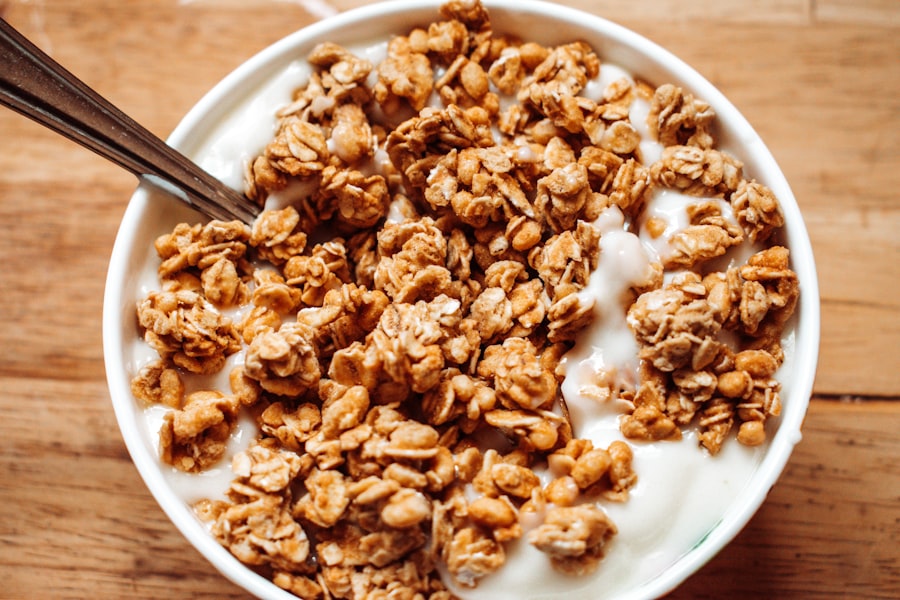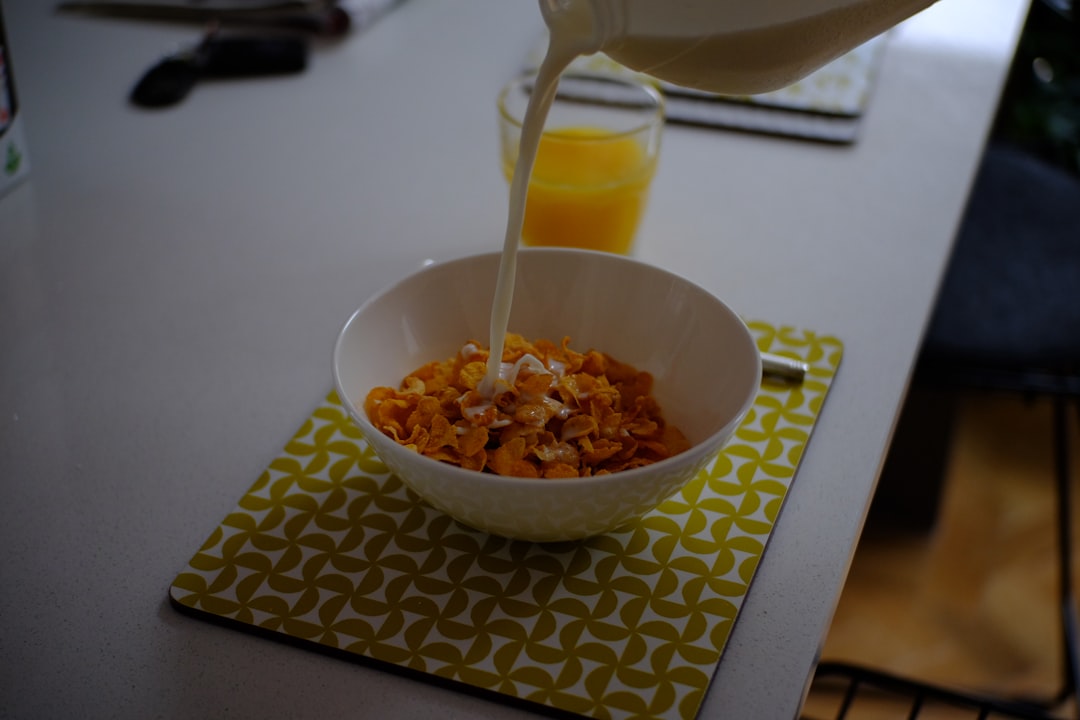The journey of processed breakfast cereals began in the late 19th century, a time when the industrial revolution was transforming food production. You might find it fascinating that the first commercially successful breakfast cereal was created by Dr. John Harvey Kellogg in 1894. He developed a flaked cereal made from toasted corn, which he believed would promote health and well-being. This innovation marked the beginning of a new era in breakfast foods, as it combined convenience with nutrition, appealing to the busy lifestyles of the emerging middle class. As you delve deeper into the history, you’ll discover that the early 20th century saw a surge in cereal production, with companies like Post and Quaker Oats entering the market. These brands began to market their products not just as food but as health solutions, often touting their high fiber content and ability to aid digestion. The introduction of sugar-coated cereals in the 1950s and 1960s further revolutionized the industry, making breakfast cereals even more appealing to children and families. This shift not only changed breakfast habits but also set the stage for the marketing strategies that would dominate the industry for decades.
Key Takeaways
- Processed breakfast cereals have a long history dating back to the late 19th century, when they were first developed as a convenient and shelf-stable breakfast option.
- Many processed breakfast cereals are fortified with vitamins and minerals, but they can also be high in sugar, sodium, and artificial additives, making them a less nutritious choice.
- Consuming processed breakfast cereals regularly has been linked to an increased risk of obesity, heart disease, and type 2 diabetes due to their high sugar and refined carbohydrate content.
- Common ingredients found in processed breakfast cereals include refined grains, sugar, artificial colors and flavors, and preservatives, which may have negative health effects when consumed in excess.
- Marketing strategies for processed breakfast cereals often target children with colorful packaging, cartoon characters, and claims of being “part of a balanced breakfast,” which can influence food choices and preferences.
The Nutritional Content of Processed Breakfast Cereals
When you examine the nutritional content of processed breakfast cereals, you’ll find a wide range of options available on supermarket shelves. Some cereals are fortified with vitamins and minerals, providing essential nutrients that can contribute to a balanced diet. For instance, many cereals are enriched with iron, B vitamins, and vitamin D, which can be beneficial for individuals who may not get enough of these nutrients from other food sources.
However, it’s crucial to read labels carefully, as not all cereals are created equal. On the flip side, many processed breakfast cereals are high in added sugars and low in fiber. You may notice that some popular brands contain more sugar than you would expect, which can lead to energy spikes followed by crashes.
Additionally, while some cereals boast whole grains as their primary ingredient, others rely heavily on refined grains that lack the nutritional benefits of their whole counterparts. Understanding these nuances can empower you to make better choices when selecting breakfast cereals for yourself and your family.
The Impact of Processed Breakfast Cereals on Health

The impact of processed breakfast cereals on health is a topic of ongoing debate among nutritionists and health experts. On one hand, you might appreciate the convenience they offer, especially during busy mornings when time is limited. A quick bowl of cereal can provide a source of energy and essential nutrients to kickstart your day.
However, it’s essential to consider the long-term effects of regularly consuming highly processed options. Research has shown that diets high in added sugars and low in fiber can contribute to various health issues, including obesity, diabetes, and heart disease. If you frequently rely on sugary cereals for breakfast, you may be inadvertently increasing your risk for these conditions.
It’s important to strike a balance and consider incorporating whole foods into your morning routine, such as fruits, nuts, or yogurt, alongside or instead of processed cereals.
Common Ingredients Found in Processed Breakfast Cereals
| Ingredient | Function | Health Impact |
|---|---|---|
| Sugar | Sweetener | High sugar intake linked to obesity and diabetes |
| Salt | Flavor enhancer | Excessive salt linked to high blood pressure |
| Artificial colors | Enhance visual appeal | Possible link to hyperactivity in children |
| Preservatives | Extend shelf life | Possible health risks with long-term consumption |
As you explore the ingredient lists of processed breakfast cereals, you’ll likely encounter a variety of components that may surprise you. Common ingredients include grains like corn, rice, and wheat, which serve as the base for most cereals. However, you may also find additives such as artificial flavors, colors, and preservatives designed to enhance taste and shelf life.
These ingredients can raise questions about the overall quality and healthfulness of the product. Moreover, sweeteners play a significant role in many cereals.
While these sweeteners can make cereals more palatable, they can also contribute to excessive sugar intake if consumed regularly. By familiarizing yourself with these common ingredients, you can make more informed decisions about which cereals align with your dietary goals.
The Marketing Strategies Used to Promote Processed Breakfast Cereals
The marketing strategies employed by cereal companies are as diverse as the products themselves. You may have noticed that many brands target children through colorful packaging and cartoon mascots that capture their attention. This approach not only makes the product appealing but also creates a sense of familiarity and loyalty among young consumers.
As a result, parents often find themselves purchasing these cereals based on their children’s preferences rather than nutritional value. In addition to targeting children, companies often emphasize health claims in their advertising campaigns. Phrases like “whole grain,” “high fiber,” or “low fat” are commonly used to attract health-conscious consumers.
However, it’s essential to approach these claims with a critical eye; just because a cereal is marketed as healthy doesn’t necessarily mean it is. By understanding these marketing tactics, you can better navigate the cereal aisle and choose products that genuinely meet your nutritional needs.
The Role of Processed Breakfast Cereals in a Balanced Diet

Processed breakfast cereals can play a role in a balanced diet when consumed mindfully and in moderation. You might find that they offer convenience and variety, making it easier to incorporate different grains into your meals. When paired with nutrient-dense toppings like fruits or nuts, cereals can provide a well-rounded breakfast option that fuels your day.
However, it’s crucial to recognize that not all cereals are created equal. You should aim for options that are lower in added sugars and higher in fiber to maximize their health benefits. Additionally, consider rotating your breakfast choices to include whole foods like oatmeal or smoothies alongside processed cereals.
This variety can help ensure you’re getting a wide range of nutrients while keeping your meals interesting.
The Environmental Impact of Processed Breakfast Cereals
The environmental impact of processed breakfast cereals is an increasingly important consideration for consumers like you who are concerned about sustainability. The production of grains used in cereals often involves significant agricultural practices that can lead to soil degradation and water depletion. Furthermore, the processing and packaging of these products contribute to carbon emissions and waste generation.
As you become more aware of these issues, you might consider seeking out brands that prioritize sustainable practices. Some companies are now focusing on organic ingredients or environmentally friendly packaging solutions to reduce their ecological footprint. By supporting these brands, you can contribute to a more sustainable food system while still enjoying your favorite breakfast options.
The Connection Between Processed Breakfast Cereals and Childhood Obesity
The connection between processed breakfast cereals and childhood obesity is a pressing public health concern that has garnered significant attention in recent years. As you may know, childhood obesity rates have been steadily rising, leading experts to investigate various contributing factors—including dietary habits influenced by marketing strategies targeting young consumers. Many sugary cereals are marketed directly to children, often leading them to develop preferences for high-sugar foods at an early age.
Research indicates that children who consume high-sugar breakfast cereals are more likely to experience weight gain and related health issues over time. As a parent or caregiver, it’s essential to be mindful of the choices available to children at breakfast time. Encouraging healthier options—such as whole grain cereals with minimal added sugars or even homemade alternatives—can help instill better eating habits that last into adulthood.
The Controversies Surrounding Processed Breakfast Cereals
The world of processed breakfast cereals is not without its controversies. One major point of contention revolves around the marketing practices employed by cereal companies. Critics argue that many brands exploit children’s vulnerability by promoting sugary cereals as healthy options through misleading advertising tactics.
Another controversy lies in the nutritional content of these cereals themselves. While some brands tout their health benefits through fortification with vitamins and minerals, others have been criticized for their high sugar content and low nutritional value overall.
As a consumer navigating this landscape, it’s important for you to stay informed about these issues so you can make choices that align with your values regarding health and nutrition.
Alternatives to Processed Breakfast Cereals
If you’re looking for alternatives to processed breakfast cereals, there are plenty of delicious and nutritious options available that can provide a satisfying start to your day without relying on heavily processed ingredients. For instance, oatmeal is an excellent choice; it’s rich in fiber and can be customized with various toppings like fruits, nuts, or honey for added flavor. Another alternative is yogurt parfaits made with Greek yogurt layered with fresh fruits and granola—this combination offers protein along with essential vitamins and minerals while keeping added sugars in check.
Smoothies are also a fantastic option; blending fruits with leafy greens or nut butter can create a nutrient-dense meal that’s both filling and refreshing.
Tips for Making Informed Choices About Processed Breakfast Cereals
When it comes to making informed choices about processed breakfast cereals, there are several strategies you can employ to ensure you’re selecting healthier options for yourself and your family. First and foremost, always read nutrition labels carefully; pay attention not only to sugar content but also serving sizes and fiber levels. Additionally, consider opting for cereals that list whole grains as their first ingredient—this indicates a higher nutritional value compared to those made primarily from refined grains.
Look for products with minimal added sugars; ideally, aim for those containing less than 10 grams per serving. Lastly, don’t hesitate to explore new brands or varieties; sometimes lesser-known options offer better nutritional profiles than mainstream choices. By arming yourself with knowledge about processed breakfast cereals—from their history and nutritional content to their impact on health—you can make choices that align with your dietary goals while enjoying the convenience they offer.
In recent years, there has been growing concern about the nutritional value of processed breakfast cereals, which are often marketed as healthy options but can be laden with sugar and artificial ingredients. An insightful article that delves into the truth about these cereals can be found on Explore Senior Health. This article provides a comprehensive analysis of the ingredients commonly found in processed cereals and their potential health impacts. For more detailed information, you can read the full article by visiting this link.
WATCH THIS!🧠 The Breakfast Mistake That Fuels Senior Memory Loss
FAQs
What are processed breakfast cereals?
Processed breakfast cereals are cereals that have been refined, often with added sugars, preservatives, and artificial flavors. They are typically found in boxes and are marketed as a quick and convenient breakfast option.
Are processed breakfast cereals healthy?
Many processed breakfast cereals are high in added sugars, low in fiber, and lack essential nutrients. They may also contain artificial colors and flavors. As a result, they are not considered a healthy choice for breakfast.
What are the potential health risks of consuming processed breakfast cereals?
Consuming processed breakfast cereals regularly can contribute to weight gain, increased risk of type 2 diabetes, and other health issues. The high sugar content can also lead to energy crashes and cravings throughout the day.
Are there any healthier alternatives to processed breakfast cereals?
Yes, there are many healthier alternatives to processed breakfast cereals, such as whole grain cereals, oatmeal, yogurt with fruit, and eggs. These options provide more nutrients, fiber, and protein, and are lower in added sugars.
How can I make my breakfast cereal healthier?
If you choose to eat processed breakfast cereals, you can make them healthier by adding fresh fruit, nuts, or seeds to increase the fiber and nutrient content. Additionally, choosing cereals with lower sugar content and fewer artificial ingredients can also make them a slightly healthier option.
